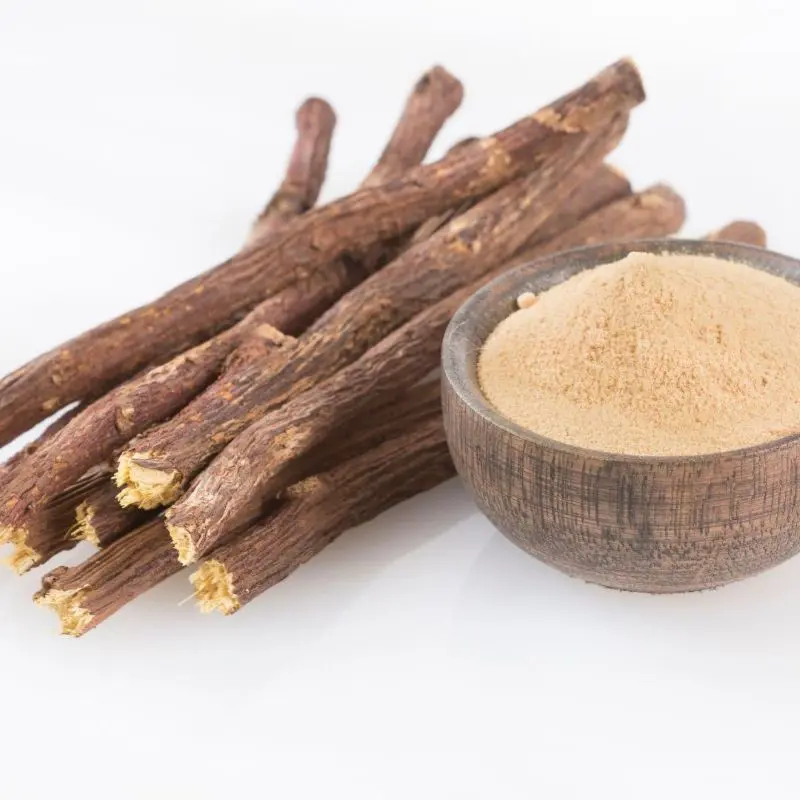Is Wheat Bread Healthy? An Expert Picks
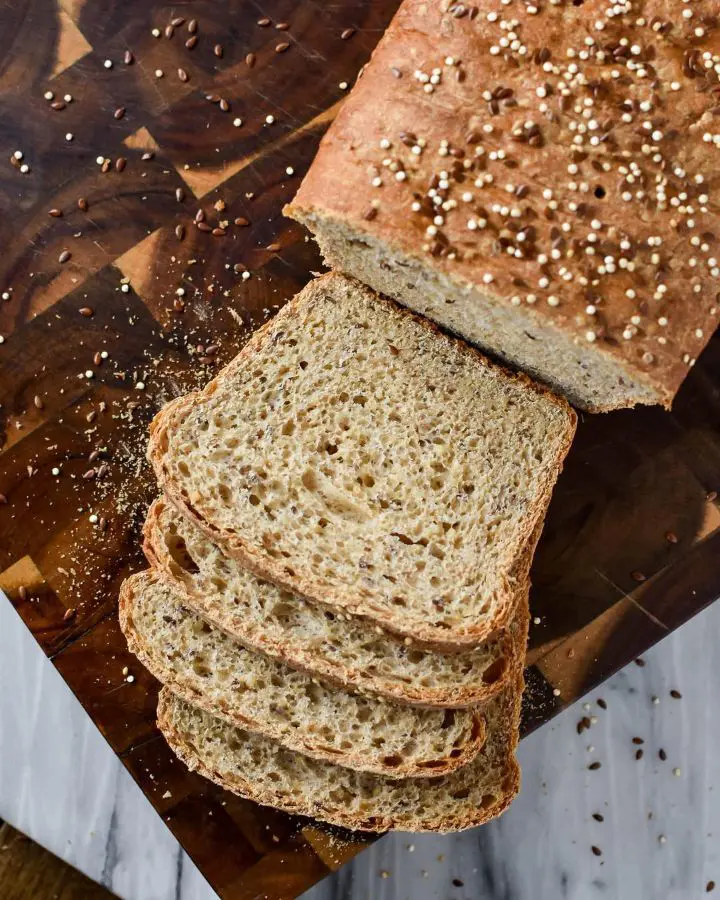
This post may contain affiliate links. If you make a purchase through links on our site, we may earn a commission.
Wheat bread has been proudly celebrated as a dietary staple in countless homes for as long as people can remember. It has earned a reputation as a healthier alternative to white or any other processed bread, that no one can deny. Because of its evident fame people make wheat bread a top pick for better health.
But a question arises here, is whole wheat bread truly healthy? In this article, we'll swoop deep into the nutritional aspects, benefits, potential drawbacks, and expert opinions on wheat grain- making you an informed choice.
Understanding Whole Wheat Bread
Let's shortly and simply understand our preferred and healthy whole wheat bread:
They are typically produced from flour that includes all parts of wheat grain, such as the bran, germ, and endosperm. Surprisingly, all these compositions differ from white bread, as they are made from refined or processed flour. In the refining process, all those bran and germ get removed from the flour, which means it loses many nutrients and important fiber.
Types of Wheat Bread
While roaming around the grocery store, you can see different types of wheat bread, and as you know each one has its own ingredients with several health benefits. Below for your convenience, we have listed and explained a few types of wheat bread let's see:
- Whole Wheat Bread: As mentioned in its name, this bread is made from whole wheat and does not go through any refining at all, so what you are putting in your mouth has several nutrients that you need.
- Multigrain Bread: It is also produced with whole wheat grains but with other added nutritious grains like oats, barley, and millet.
- Sprouted Wheat Bread: Created from sprouted wheat grains (formed by whole wheat seeds that have begun to germinate, or sprout) which offers added nutrients as well.
- Enriched Wheat Bread: This bread is produced from refined flour, but some nutrients are added back after processing.
Nutritional Profile Of Wheat Bread
The nutritional content of wheat bread can therefore change depending on the type and brand of bread that one uses. However, according to USDA a typical 100g whole wheat bread contains:
- Protein: 9.09 g
- Total lipid (fat): 3.03 g
- Carbohydrate by difference: 48.48 g
- Fiber total dietary: 6.1 g
- Total sugars: 9.09 g
- Calcium: 27 mg
- Iron: 3.03 mg
- Sodium: 333 mg
- Energy: 242 kcal
- Cholesterol: 0 mg
- Fatty acids: 0 g
Health Benefits Of Genuine Whole Wheat Bread
There is no doubt that wheat bread is filled with several health benefits and people love to consume it for their better health. Yet, people may not be aware of all the advantages of wheat bread, no worries, below we have discussed all the merits of our fav wheat bread.
1. Rich in Dietary Fiber

An excellent source of dietary fiber, which offers numerous benefits for our digestive system. Dietary fiber in wheat bread helps:
- Regulate bowel movements
- Feed beneficial gut bacteria
- Create a feeling of fullness, which aids in weight management
- Slow down sugar absorption, helping to stabilize blood sugar levels
2. Supports Heart Health
Another noteworthy benefit of this bread is its positive impact on heart health. Different research consistently shows that the combination of fiber, antioxidants, and other beneficial compounds in wheat bread helps:
- Lower cholesterol levels
- Reduce inflammation
- Maintain healthy blood pressure
- Support overall cardiovascular health
3. Weight Management
These days, maintaining a healthy weight is a primary concern for many people, and fortunately, wheat bread can help with weight loss. It promotes feelings of fullness due to its fiber content. This satisfaction can help you eat fewer calories, overall making it simpler to manage or lose weight. In addition to managing your weight, whole wheat bread increases blood sugar levels more slowly than other refined grains because it has a low glycemic index (GI). This delivers steady energy without any sudden spikes.
4. Blood Sugar Control

Because of several studies and research, we can say that wheat bread is the best fit for individuals who are suffering from diabetes or those at risk of developing diabetes. The low GI contained in the bread helps to sustain blood sugar levels and improve insulin sensitivity. As a result, it is a most suitable choice over white bread or any other processed grain products.
5. Packed with Essential Nutrients
Different research and studies reveal that whole wheat bread retains more nutrients than white bread. Since, it is awarded with more fiber, protein, vitamins, and minerals. These nutrients are considered to promote good health in various ways, as they replenish the body with essential nutrients that facilitate metabolism.
Potential Drawbacks
Despite offering several health benefits, it is essential to consider potential drawbacks. Some probable cons of whole wheat bread are:
1. Gluten Sensitivity
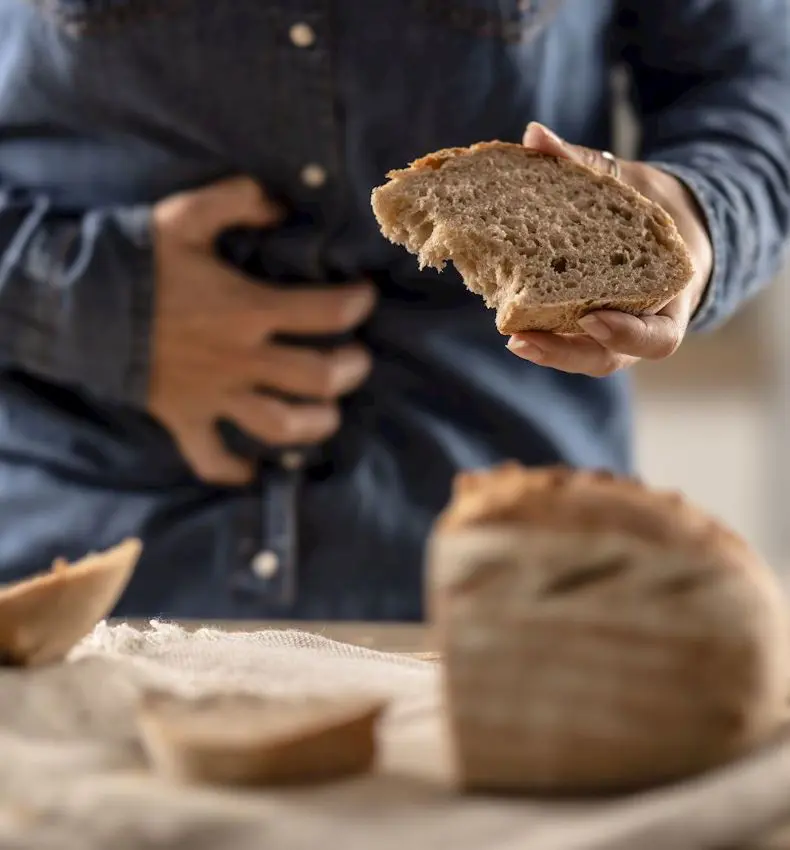
If you are a patient of celiac disease (a long-term digestive and immune problem that harms or damages the small intestine) or sensitive to gluten, you should avoid wheat bread completely. For people with such problems, gluten-free options made from things like quinoa, amaranth, or brown rice will be the better choices.
2. Added Sugars and Preservatives
Many commercial wheat bread products contain unnecessary additives, for instance:
- High fructose corn syrup
- Artificial preservatives
- Dough conditioners
- Added sugars
- Excess sodium
These additions can diminish the health benefits of whole wheat bread and potentially contribute to various health issues when consumed in excess.
3. Caloric Content
Even though whole wheat bread is healthier than white bread, it still contains calories. That's why, overconsumption can lead to weight gain if not balanced with physical activity. Hence, portion control is crucial.
4. Phytic Acid Content
Likewise, wheat contains phytic acid (an antinutrient that can hamper the absorption of certain minerals like calcium and iron). However, soaking, sprouting, or fermenting wheat grains can reduce phytic acid levels.
How To Choose The Healthiest Wheat Bread
When you are on the way to shop the whole wheat bread beside its expiry date remember to check all the ingredients and labels. It's fundamental to read labels carefully. Here are some tips to ensure you're making the healthiest choice:
- First of all, look at the list of ingredients. Whole wheat flour should be the main ingredient, or it's even better if the package says "100% whole wheat bread."
- While scanning the bread packet don't forget to check its fiber amount. Always aim for at least 2-3 grams of fiber per slice.
- Another essential thing to remember is to always watch for sugar content. It will be best if you pick a brand with less than 2 grams of added sugar per slice.
- Further, select such whole wheat bread which holds less than 200 mg of sodium per slice.
- Examine all the ingredient list lengths because generally, fewer ingredients indicate less processing.
Expert Picks for the Best Wheat Bread
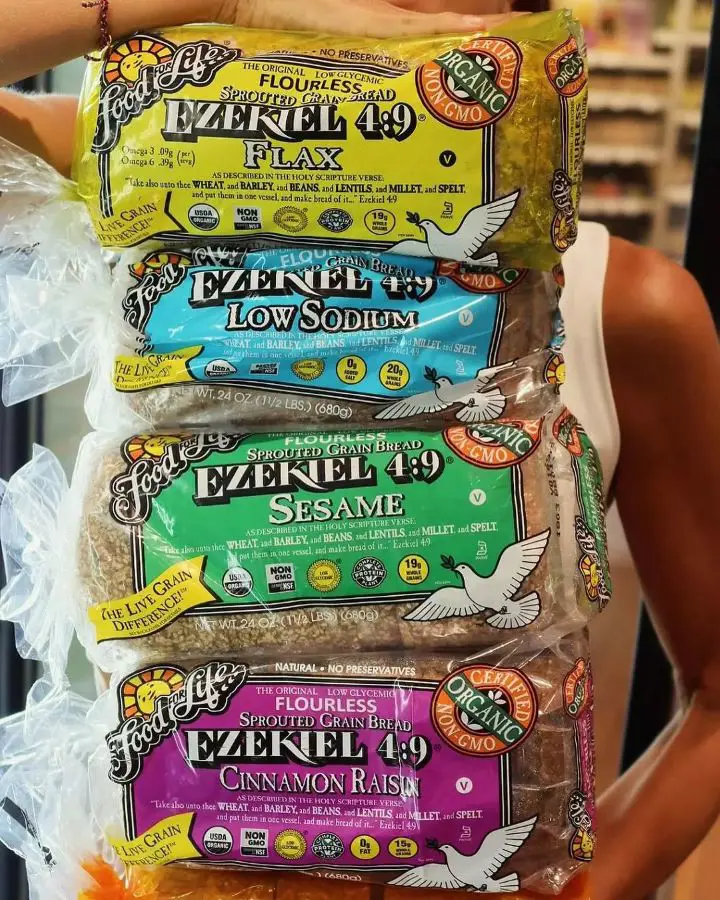
- Ezekiel 4:9 Sprouted Whole Grain Bread: This is made from sprouted grains and legumes. It delivers a nutrient-dense option with no added sugars.
- Dave's Killer Bread 21 Whole Grains and Seeds: This bread is famous among health-conscious people because it is loaded with whole grains, seeds, and fiber.
- Nature's own 100% Whole Wheat Bread: A widely available option that is affordable and produced from whole wheat flour.
- Silver Hills Sprouted Power Bread: This bread is a great choice for those seeking enhanced digestibility and nutrient availability, as it is purely created from sprouted grains.
Homemade Wheat Bread
Making wheat bread at home allows you to control the ingredients and avoid additives. Here's a simple recipe for homemade whole-wheat bread:
Ingredients:
- 3 cups of whole wheat flour
- 1 packet of active dry yeast
- 1 cup of warm water
- 2 tablespoons honey or maple syrup
- 2 tablespoons olive oil
- 1 teaspoon of salt
Instructions:
- In a bowl, combine warm water, yeast, and honey. Let it rest for five to ten minutes until it turns out bubbly.
- Add olive oil, salt, and half the flour. Mix everything together well.
- Without hurrying put in the rest of the flour until the mixture turns into proper dough.
- Squeeze and massage the dough for eight to ten minutes until it feels soft.
- Thereafter, place the dough in an oiled bowl, then cover the bowl and leave the dough to rise for an hour.
- Likewise, shape the dough into a loaf and place it in a greased bread pan.
- Let it rise for another 30 minutes.
- Bake at 375 degrees F (190 degrees C) for 25-30 minutes. Make sure to let it cool before slicing.
Some tips:
When baking whole wheat bread at home:
- Start with high-quality whole-wheat flour
- Experiment with adding seeds or nuts for extra nutrition
- Use honey or maple syrup instead of refined sugar
Benefits of home baking:
Making your own whole wheat bread allows you to:
- Control all ingredients
- Avoid preservatives and additives
- Adjust the recipe to your taste preferences
- Save money in the long run
- Enjoy the satisfaction of home baking
Best Storage Practices
To maintain freshness and prevent waste:
- Store bread in a cool, dry place
- Keep it in its original packaging or transfer it to a bread box
- Consider freezing extra loaves for longer storage
- Detour refrigeration because refrigerating can actually speed up staleness
Incorporating Wheat Bread Into A Healthy Diet
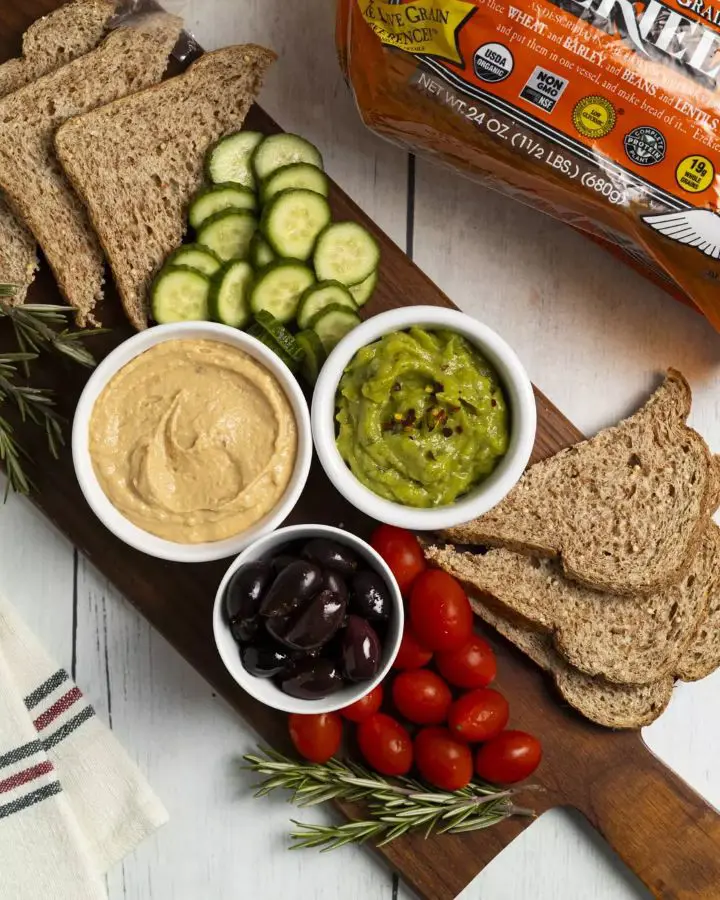
Regardless of a healthier option, it is vital to watch out whether you are ingesting wheat bread at a limited level or neglecting its portion level. Let's look out the suitable ways to incorporate wheat bread into our healthy diet:
1. Portion Control: While whole wheat bread can be part of healthy bread, portion control stays essential. Most adults should limit themselves to 2-4 servings of whole grains per day, depending on their activity levels and caloric needs.
- Children ages 4-8: 1-2 slices or 60-120 grams
- Children ages 9-13: 2-3 slices or 120-180 grams
2. Healthy Serving Suggestions:
Make the most of your wheat bread by:
- Using it as a base for open-faced sandwiches with plenty of veggies.
- Toasting it and topping it with avocado, eggs, or nut butter
- Creating balanced sandwiches with lean proteins and fresh produce
- Using it for breakfast with healthy toppings instead of sugary cereals
Whole Wheat Bread Vs. White Bread
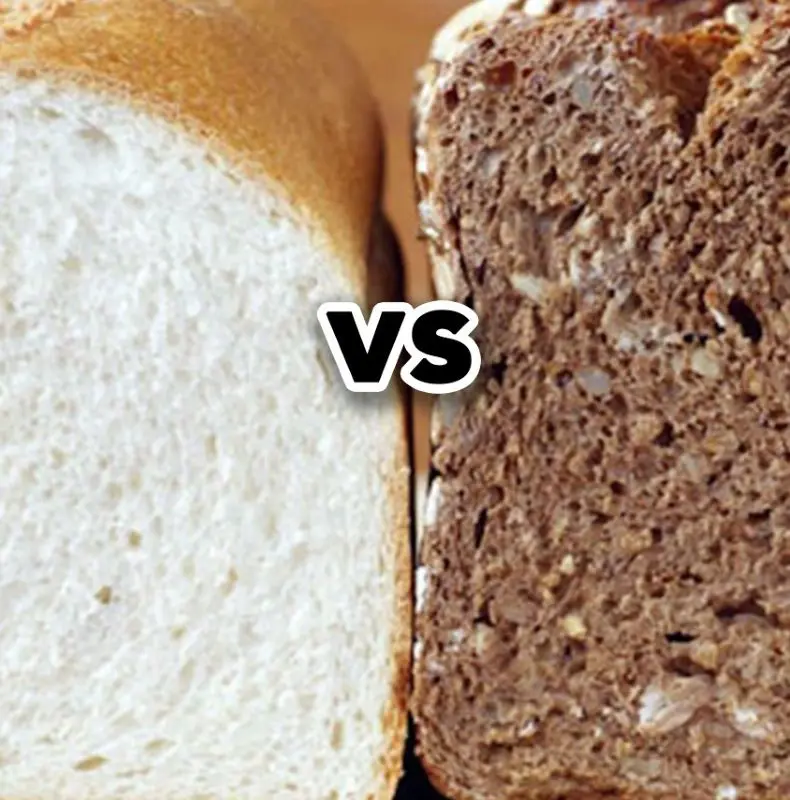
White bread and whole wheat bread seem different from each other in looks, the actual difference is far beyond the colors. White bread is made from wheat that has been stripped down, removing the bran and germ layers to leave only the white part; the endosperm. This process makes it easier and lighter but also eliminates many natural nutrients.
Furthermore, just minimally processed whole wheat bread retains all three parts of the grain which are the bran, the fiber, and the nutrient-rich germ. This means that the whole grain contains more fiber, vitamins, minerals, and antioxidants than the white grain. They feel heavier and contain a stronger and nuttier flavor with real health benefits.
Whole Wheat Bread Vs. Brown Bread
The confusion between whole wheat bread and brown bread is evident. Nevertheless, they are absolutely different. As we already explained, whole wheat bread is made utilizing the entire wheat kernel, which consists of bran, germ, and endosperm. This process maintains a higher amount of nutrients and fiber.
In contrast, brown bread can be a bit tricky. Remember, not all brown bread is made from whole grains even though it looks healthier because of its brownish color. Some types of brown bread are just regular bread, but colored with molasses or caramel to make them look darker and tempting. Thus, if you are looking for bread that is nutritious and filling, whole wheat bread is always the more pleasing choice.
Recent posts
Nutrition
Nutrition
Liquorice Root: Benefits And Uses
You can spell it liquorice or licorice; this herb or root has been in use for centuries in most medicinal applications, as a natural sweetener and to enhance flavors. Regarding its origins, it comes from the root of the "Glycyrrhiza galbre" plant and...
Nutrition
Is Ramen Healthy? Here's What Dietician Says
Ramen is a traditional dish from Japan that in the recent era has become a global phenomenon. This beloved and comforting soupy dish however has been questioned, when it comes to its nutrition. Best for those looking for a quick (instant), affo...
Nutrition
Is Sausages Healthy? Nutrition And Health Benefits
Sausages are tasty in an addictive way, making them one of the most popular foods worldwide. You may have enjoyed this convenient food often, whether on a bun with mustard or grilled on a barbecue, the simple preparation methods are what makes its co...
Nutrition
Ice Cream Benefits: Nutrition, Potential Risks And Best Choices
Not gonna lie, ice cream is often taken as a guilty pleasure treat, a delightful treat that takes you to cloud nine but is frequently associated with negative health implications. Nonetheless, the happy news is when devoured mindfully, ice cream can ...
Nutrition
Is Sushi Healthy? Some Good and Bad Choices
Sushi is a wholesome meal and a beloved Japanese dish. The traditional sushi recipe is a simple combination of fresh fish, vegetables, and vinegared rice which is popular for its minimalistic preparation. As with any food, there are factors that dete...
Nutrition
16 Benefits Of Coriander That Will Surprise You
Abundant in nutrients and antioxidants, coriander is an annual herb with a characteristic aroma that is extensively used around the world. Both coriander leaves (also called cilantro) and seeds are used in various cuisines around the world. Known fo...
